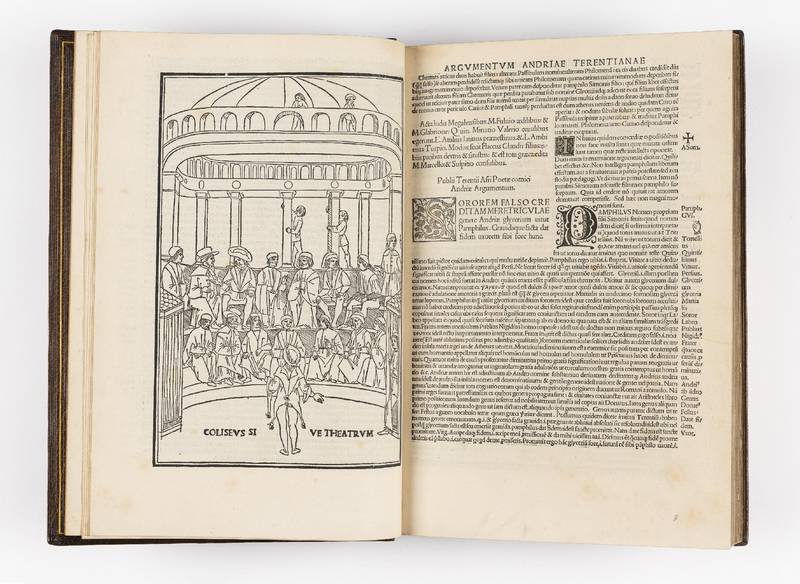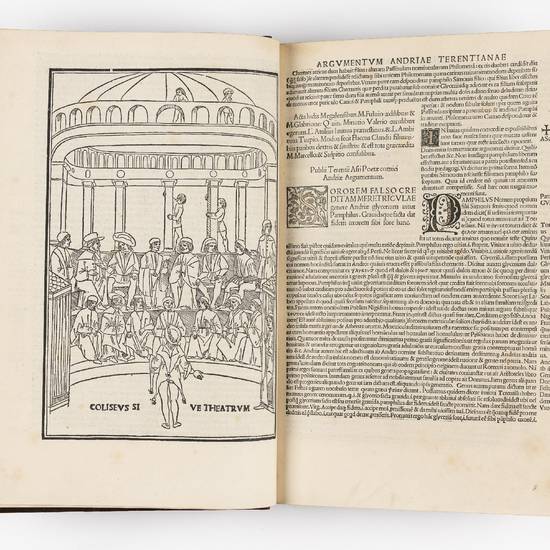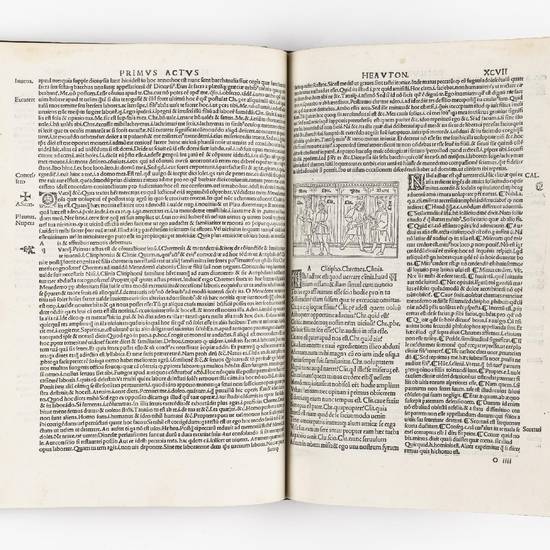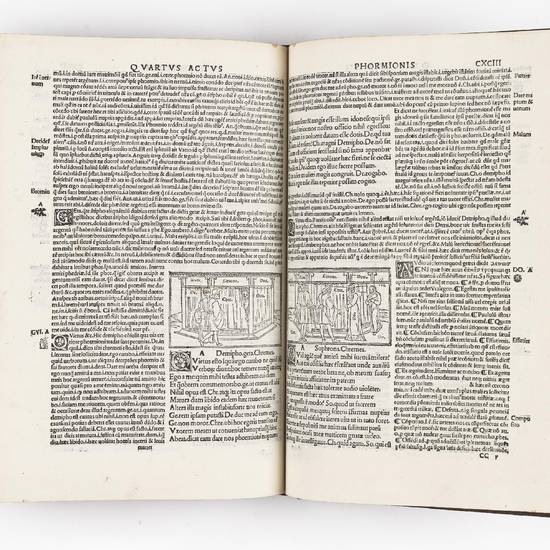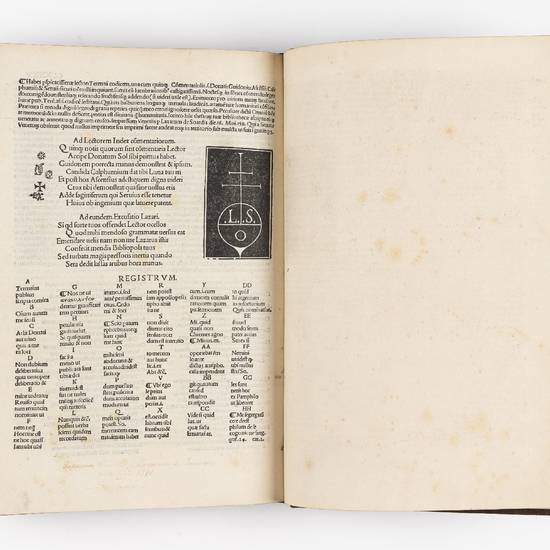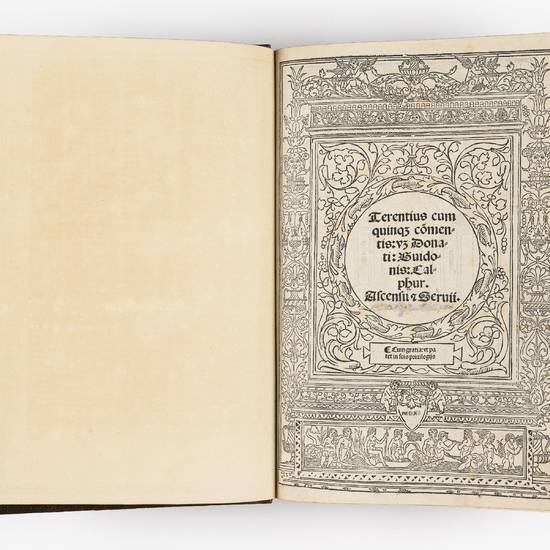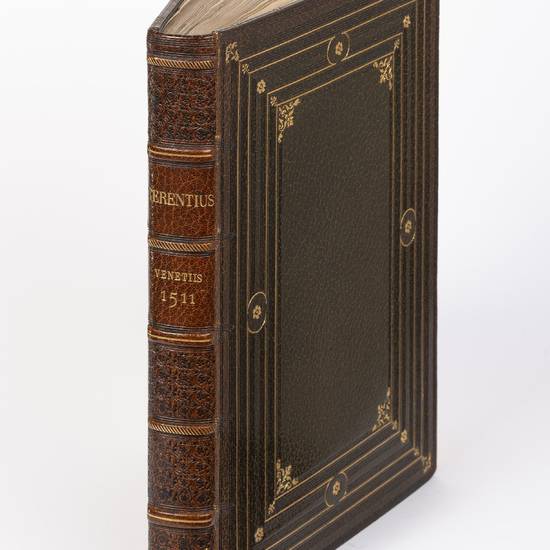BOUND IN OLIVE GREEN MOROCCO BY RIVIÈRE
Folio (304x210 mm). [10], XIII-CCXXXV [i.e. 232], [1] leaves. Collation: AA6 B4 C-Z82AA-HH8. Printer's device, colophon, and register at l. HH7v. Leaf HH8 is a blank. Title within a beautiful architectural border with grotesque decorations on the sides and, below, a scene showing Neptune and the tritons bearing gifts. On the title-page verso is a full-page woodcut showing Terence seated on a chair surrounded by his commentators in a large room with arches and an apse. Another magnificent full-page woodcut is on the verso of l. B3 showing a theatre with the audience seen from the perspective of the actor on stage. With 153 woodcut vignettes in text illustrating the different characters of the comedies on stage. This edition also has the particularity of indicating to the reader the author of each of the five commentaries that accompany the plays by means of five different symbols stamped in the margin where the text begins; a short poem on l. HH7v then serves as a legenda for these symbols. Nicely bound by Rivière in olive green morocco gilt, spine with seven raised bands and gilt title, gilt edges (spine slightly faded by the sun). On the front pastedown bookshop labels Lauria of Paris and Mediolanum of Milan, and morocco bookplate with the gilt initials SB of Silvain Brunschwig. Two small stains on ll. CLXXIII and CXCI, a few gatherings slightly browned, but a beautiful copy.
Nicely illustrated edition of Terence's comedies with the commentaries by Aelius Donatus (fl. 4th cent.), Guy Jouennaux (c. 1450-1507), Giovanni Calfurnio (d. 1503), Josse Bade (1462-1535), and Servius (fl. 4th-5th cent.), which had already appeared in the Soardi editions of 1504 and 1508. The illustrations are the same as in the Soardi edition of 5 July 1497, inspired by those in the Lyons Trechsel edition of 1493 and adapted to the Venetian taste.
“The Terence printed at Lyons in 1493, was the prototype from which the cuts in the Venetian edition, four years later, were directly copied […] In the Terence […] the Venetian artist simply borrowed the subjects and the compositions from his precursor. The drawing, the execution, and the style of costume were wholly remodeled according to the taste of Venetian art […] Two admirable outline-woodcuts, each occupying a full page, are found at the beginning of the book. The first represents Terence in the act of lecturing, at a kind of professional desk, with Donatus, Accursius, and others of the chief Latinist grammarians, grouped around him […] The second of the two large woodcut is a view of the antique theater, or rather of the auditorium as seen from the stage. We need not be surprised to observe that the audience consists of persons, such as might have been met with in the streets of Venice in the fifteenth century; and that the actors, whom we see from behind, wear a sort of costume usually appropriated to fools and jesters” (Lippmann, The Art of Wood Engraving in Italy, pp. 92-94).
Essling, 871; Sander, 7208; Adams, T-308; Edit 16, CNCE31939; Rava, p. 24.
[10105]

